Join the 2024 War and Peace Read Along
Friday Fireside #12 | Introducing the 2024 slow read of Leo Tolstoy's War and Peace
Hi, Simon here from Footnotes and Tangents. Every Friday, I light a welcoming fire and invite slow writers and slow readers to gather in a place of creative curiosity. Welcome to Friday Fireside.
Today I am introducing my slow read of War and Peace, for the second year running. This post contains everything you need to know to get started and to decide if this book group is for you.
This newsletter is free for all. If you would like to support Footnotes and Tangents, please share and recommend with friends and family. And enjoy! –
Dear readers,
So here’s the thing. I’ve always been a solitary reader. A loner. A wallflower who’d prefer to listen quietly at the back, then sneak out alone with just a good book for company.
But this year, I did something different. I joined a book club, a reading group, a read along – call it what you will. OK, I didn’t just join one. I started one. Almost by accident. War and Peace, a chapter a day, for a whole year.
Hundreds of readers got involved on Instagram. Tomorrow, I’m off down to Manchester to meet just a few of those who accompanied me on this incredible adventure.
And next year, 2024, I want to do it again. It will be my fifth read of War and Peace, and my second read along. This time on Substack, and this time with you.
You’ve probably got questions. So here’s a little FAQ to get us started. I’ll intersperse this Q&A with some testimonials from this year’s readers.
“It has been on my TBR since I was 9! I'm so glad I waited for this extraordinary experience - I would've missed so much! Reading one chapter/day has been immersive for me. The slow absorption of the story, and then the story absorbed me. Simon's daily summaries are simply sublime. He has created a place of kindness and inclusion in our discussion group, where sharing in the perspectives of others has been so deeply enriching. For me, this has been life-enhancing and I just urge you all to take the leap in '24 and treat yourselves to the most wonderful experience! You'll be so thrilled!”
– Juliet
1. Why are you reading War and Peace again?
As you may know, I am running a brand new read along of the Cromwell Trilogy next year. So why on earth am I doing the War and Peace read along again?
Two reasons:
To make something that lasts. Over this year, I have amassed a frightening amount of notes across Instagram, Discord, Substack, and elsewhere. We’ve been discussing the book all over the place. I want to put all these resources and discussion in one place where they can be of use to readers next year and beyond.
Because I want to share this experience with everyone. Behind the reader testimonials are some amazing stories. Reading War and Peace slowly and collectively has been transformative for many people. Readers who didn’t think they were “clever enough” to read a classic, or who had stopped reading altogether. Readers looking for insight, wisdom, beauty, or just a good yarn. I want more people to benefit from this unique reading experience.
So, I’m doing it again.
“The W&P read-along is frankly the highlight of my day. I have so so enjoyed the community of fantastic readers who bring other ideas and viewpoints to add to one’s personal reading of this truly exceptional book, in a space where you are never made to feel silly for asking a question or putting an idea forward. Simon has steered the read-along with passion, intelligence, and creativity. It is fully obvious that he loves this book, and now I do too! I’m bereft at how little we have left to read (over a thousand pages in). Thank you Simon for bringing me the magic and wisdom of W&P through your remarkable hosting.”
– Annabel
2. OK, but why should I read War and Peace?
“If life could write, it would write like Tolstoy.” – Isaac Babel
Why should you care about the story of four aristocratic families in imperial Russia during the Napoleonic wars? Let’s say you’re not interested in some rich Russians and a lot of fighting.
I hear you. Me neither. But that’s not really what this book is about.
The best way I can describe War and Peace is an encyclopedia or panorama of human experience. Within these pages, characters grow up, fall in love, discover fear, hatred and despair, care for each other and grieve as well. They learn how to live, and how to die. They ask big questions, and sometimes they find answers.
And all this is told with an unerring clarity and compassion. It is like looking into still clear waters. You see life reflected back at you in the novel. In the characters you meet, you recognise people you have known. You recognise yourself. And occasionally, you understand life and yourself a little better.
It’s also a great story. And first-time readers are often struck by how readable, entertaining and even funny it is. But it’s more than just a great story. It’s a good one. It has a good heart. A rich soul. And the world feels a little better, a little truer for having read it.
“The daily breakdowns / summaries of the chapters that you provide (without fail!) Simon, have really added to my experience and understanding of War and Peace. The chat with other readers, guided by yourself, is also illuminating. Definitely recommend next year’s readalong for anyone wanting to tackle War and Peace.”
– Kim
3. How does this read along thing work?
War and Peace has 361 chapters. So, it’s the perfect book to read a chapter a day over the course of a year. There will be four days off, one at the end of each of the four volumes. UPDATE: I had completely next year is a leap year! So five days off.
Each day, I will start a new thread in my Substack Chat for a casual, laid-back conversation about today’s chapter.
Every Wednesday, I will send out a newsletter for that week’s reading. To avoid spoilers, you might want to wait until Sunday before checking it out. This newsletter will have plenty of resources and discussion to help you get the most from your reading. And there will be space in the comments section to discuss and go deeper.
The rest is up to you! It’s your read-along. So, if you want to meet up, online or offline, share your own thoughts or annotations here or elsewhere, go ahead. Embrace the opportunity and run with it. You never know where it may lead.
“Simon puts so much care to ensure everybody can enjoy the reading and discussions at their own pace and his daily summaries are brilliant. I feel I am taking so much more out of War and Peace by reading everybody’s opinions and sharing mine, and there’s always someone who does some history digging to help clarify certain habits from the period or bringing historic context to specific elements.”
– Paloma
4. Which translation should I read?
This is a really big question, and it’s the one I get asked the most. I would be wary of anyone who tells you there’s a definitive answer to this question. It comes down to personal preference. And the best advice I can give is this: go to a bookshop, sit down with a couple of different editions, and read the first few pages. Then go with your gut.
One thing to keep in mind is the use of French in War and Peace. The French language plays an important social and political role in the story. In some versions, the French is translated in-text. In others, you’ll find the English in footnotes or endnotes.
There are seven English translations in print. I’m familiar with three:
Anthony Briggs (Penguin Classics)
This was the first translation I read in 2007. It feels very modern and uses British English. It’s a great translation for first-timers, and especially if you are not used to reading classics. I loved it. But it is a bit of a Marmite translation. Non-British readers often complain about the “cockney” soldiers, and in our discussion this year, we came across significant differences in favour of the other translations. But regardless, it’s a solid choice and the firm favourite for many readers.
In this translation, French is translated in the text without the need for footnotes.
Richard Pevear and Larissa Volokhonsky (Vintage Classics)
This version is often pitched as the most faithful translation, using a precise word-for-word translation of the original. If authenticity is important to you (and hey, it was very important to Tolstoy), you may value this serious and scholarly version. However, I found it a little too pedantic and flat-footed in places. I tried reading it this year but switched to a different translation. You may have a better experience.
In this edition, French is translated in the footnotes.
Louise and Aylmer Maude (Oxford World’s Classics)
The Maudes knew Tolstoy, and he personally approved of this translation. In 2010, it was revised and updated by Amy Mandelker. I have listened to the original version twice, and I’m currently reading Mandelker’s revised edition. The language can feel a little old-fashioned compared to Briggs but it is smoother than the more literal translation of Pevear and Volokhonsky. This is my preferred translation.
And in this version, the French is translated in the footnotes as well.
If you would like to dive deeper into the differences between all the translations, I recommend this article on the website We Love Translations.
“I've attempted War and Peace many times in the past and failed miserably. Simon's daily commentary and weekly wrap-ups (and now the fuller Substack commentary) have been immensely helpful. As I've mentioned previously, my 16-year-old has expressed an interest in my doing the read along again next year and reading aloud to her, which I shall definitely do!”
– Gina
5. Can I skip the “war parts”?
No.
OK, you can. People do. But I don’t recommend it. War and peace are so closely entwined in this story. Private and public lives. The epic and the miniature. You will get less than half of what this book has to offer by skipping the battles.
In fact, I’d go further. The title is misleading. It gives the impression that the book is divided into war sections and peace sections. In reality, there is peace on the battlefield and war in the ballroom. “War” and “Peace” are themes that run through the entire story, and most chapters.
And anyway, you may surprise yourself! This year, so many readers have remarked on how engaging the war scenes are. And some of Tolstoy’s most beautiful language takes place in the most frightening of circumstances.
“It's been the loveliest experiencing this book with so many others around the world, and beautifully and lovingly hosted by you Simon 🥹🩵 I'm always excited to wake up and read the days chapter with my coffee and have fun discussing it.”
– Zoe
6. What about ALL those characters and Russian names?
And there are a lot of them. More than 500 characters with over 200 real historical figures. And a character may be referred to by their title, a diminutive, their patronymic, or even a French version of their name.
This is where I will be here to help. My weekly updates will help you keep Denisovs and Dolokhovs straight in your head. If you need a reminder, you can drop a question into our chat. And I will be building a reference page on Footnotes and Tangents to keep track of who’s who.
“Doing this readalong with others has meant knowing someone else is going through what you're going through, when a character dies or a big event happens we're all there together. Reading your posts has added so much extra understanding to the story. You give important historical context and pull focus to poignant moments making it all the more enjoyable and highlight things I would've missed. War and Peace is an intimidating book but so addictive once you get going. I'm so glad I found you all to experience it together.”
– Rachel
7. How long are the chapters?
War and Peace is around 1,300 pages long. That sounds long. But it means each chapter is about 3 to 4 pages. On audiobooks, they last around 10 minutes.
That should be a very achievable amount of reading or listening. Most people happily read another book alongside their daily dose of War and Peace.
“I am very grateful to Simon for creating this wonderful readalong w&p 2023 and for travelling through this giant of a book with us every day with so much input and commitment. And a big shout out to all of you reading along, love the exchange on discord with you people ❤️ So from me a huge recommendation to join Simon's readalongs next year!!”
– Andrea
8. Can I read at my own pace?
Of course. You don’t have to stick to one chapter a day. Some weeks, you’ll find it almost impossible not to carry on reading. Or life will get in the way, and you will put the book down for a few weeks, or months.
All this is fine. We’re not at school. This is not homework. And there’s no right or wrong way to read War and Peace. Some people prefer to read in weekly chunks or just want to devour the book in one go.
Find your pace. Take advantage of as little or as much of the discussion and resources. The most important thing is that you enjoy your time with this book.
“It’s always great to share books you love and the chat is full of people who love Tolstoy. For such a challenging book, what more could you want? Simon puts an inordinate amount of effort in and it’s certainly appreciated.”
– Charlotte
9. Great, I’m in. When does it start?
Monday 1 January 2024.
I’ll put up a full reading schedule on Footnotes and Tangents soon. But the mechanics of it are fairly straightforward: a chapter a day, with four days off, one after each of the four volumes. UPDATE: I had completely next year is a leap year! So five days off.
“I have absolutely loved doing the slow readalong of War and Peace, I have got so much out of it, after reading Anna Karenina by myself, quickly last year, and wondering why I’d wasted my time on it! I have signed up as a subscriber for Simon’s substack. He puts so much love and care into this communal experience, it is amazing.”
– Rachel
10. How do I join?
There are two stages to signing up.
First, make sure you are subscribed to Footnotes and Tangents.
Next, turn on notifications for War and Peace updates on the manage subscription page. This is turned off by default:
But if you have any problems, just ask, and I will help you out.
“Without a doubt, Simon’s readalong has been THE BEST communal read/book club experience I’ve ever had. At this slow pace, you’re not just reading the book, you’re inhabiting it. Simon’s insights and added materials enrich the experience, as do your co-readers. I have gotten to know some lovely people this year. I have already signed up as a paid subscriber to Footnotes and Tangents on Substack for Wolf Crawl next year. Might do W&P again as well because it’s hard to say goodbye. 😂 Join us! You won’t regret it!”
– Laura
11. Is it free?
Yes! In fact, you can get hold of a free ebook online, my free newsletter, and the free discussion threads, and enjoy this entire read along without spending a penny.
That said, an enormous amount of work goes into this. And writing is my livelihood. So, if you value what I do and can afford it, I encourage you to support me with a £35 annual subscription. I wouldn’t be able to run this read along without these subscriptions, so I am incredibly grateful for any support.
As an incentive, each week you find some bonus content sitting behind a paywall. And everything eventually goes into a paywalled archive after two months.
But I do want to make this read along as accessible as possible. So, if you are on a low income or no income and would like full access, I will gift you a complimentary subscription, no questions asked. Just get in touch, so I can support your reading!
“There are not enough superlatives to explain how wonderful the daily readalong of W&P lead by Simon has been so far this year. It's been so good I'm contemplating doing it all again next year with a different translation. It's absolutely worth the small monthly Substack subscription if you can afford it to recognise all of the effort Simon puts in. Showing my southern UK bias here, it's less than the price of a coffee, less than the price of a pint of beer, much less than a subscription to Amazon Prime, Netflix, Disney+ etc and it's so much more fulfilling and wonderful than any of those things. Do it, you won't regret it.”
– Sarah
12. That’s it. Any further questions?
I hope I’ve convinced you to give War and Peace a chance.
If this is a book that you’ve been meaning to get to for years. A book that perhaps intimidates you. Or maybe you have tried to read it and given up. Then I strongly recommend taking this opportunity. It’s a wise and wonderful story and not nearly as difficult as you might think.
Join us, for War and Peace in 2024.
And if you’ve got any further questions, just leave me a comment or hit reply.
“I urge anyone with any interest in classics to join the War and Peace readalong next year. It's such a fantastic way of experiencing the book and Simon's daily summary makes everything easy to understand. It's the highlight of my reading year.”
– Gavin





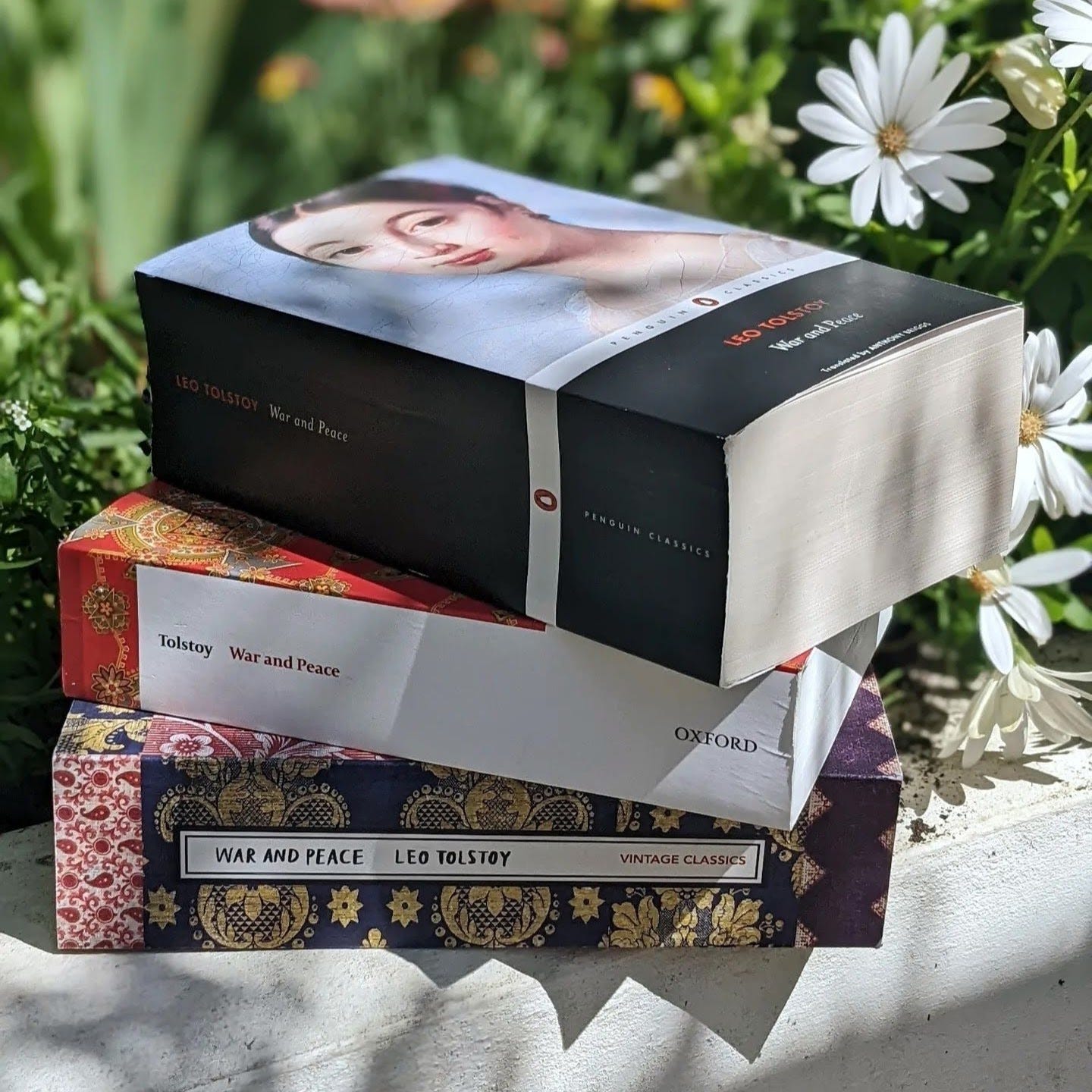
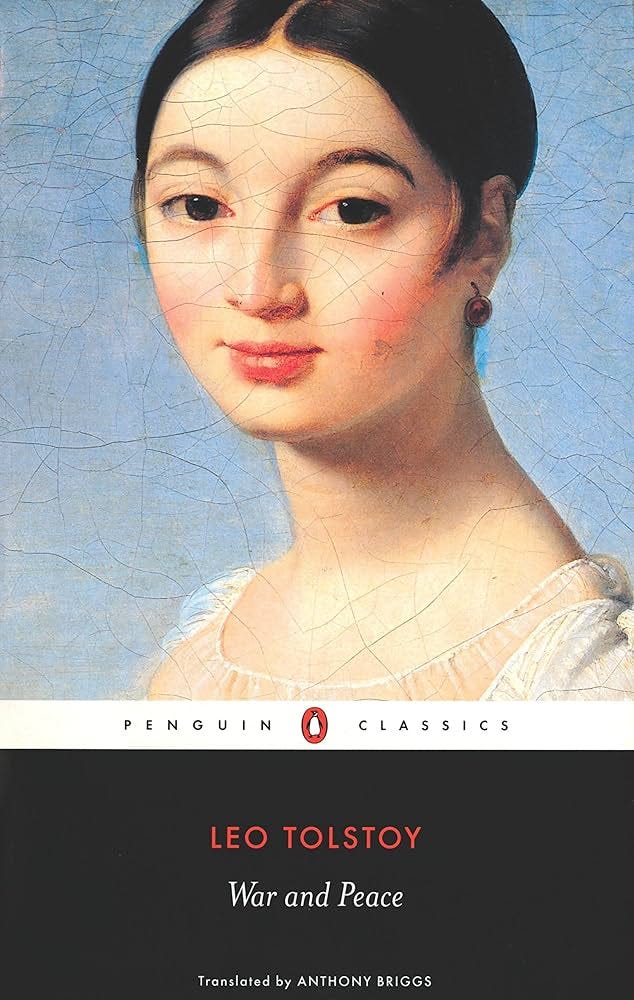
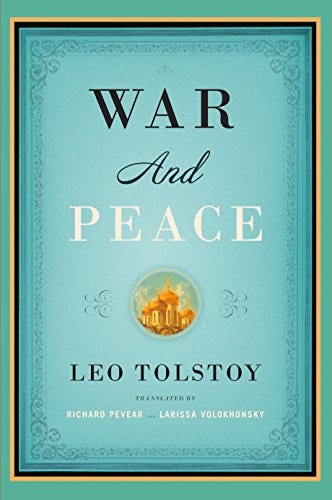
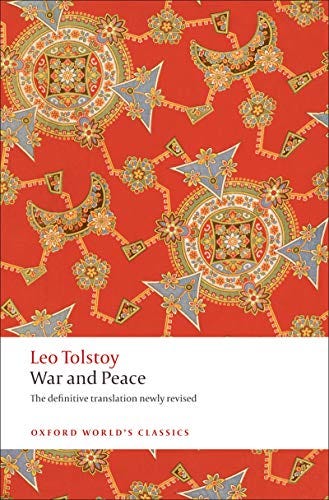
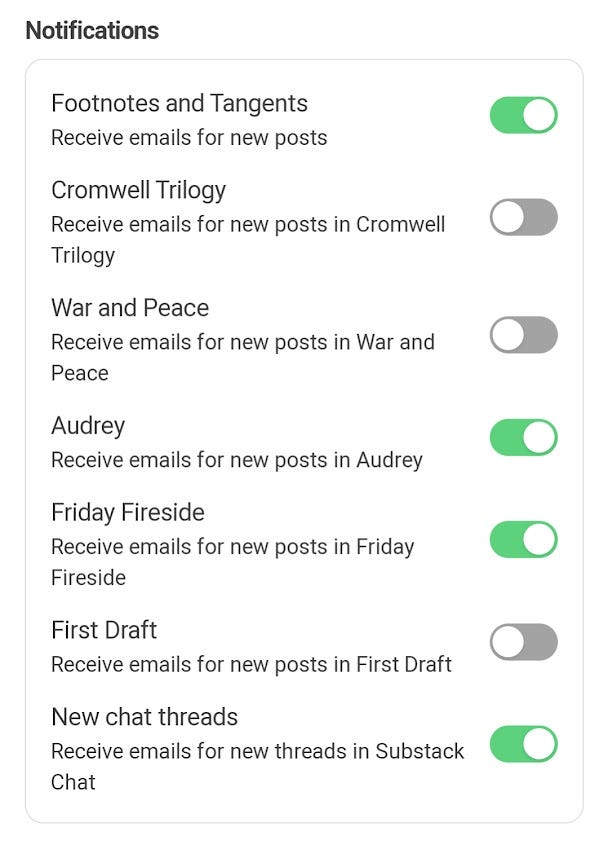
I think maybe this is what I have been unknowingly waiting for...my daughter wrote her college graduation thesis on War and Peace earlier this year and loved it so much. I bought it to read before I read her long thesis so that I can understand it but haven’t gotten around to it :-) I think I can commit to a chapter a day!
This will be my third read of War and Peace. Will be great to read with company this time...most of my (so called) friends think I’m bonkers for reading it once, let alone thrice.
During my last reading I was working in a bookshop. Whenever I was sneered at by a customer for not having read <<insert latest bodice-ripper/crime-thriller/self-help-waffle here>> I could always out sneer them by saying I was too busy reading Tolstoy. Childish I know...but...ah well, need some comebacks when working in retail.